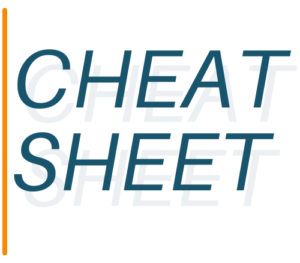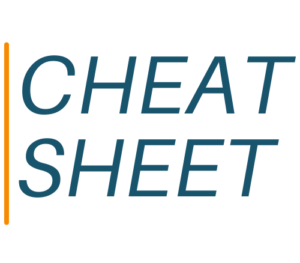
Cheat Sheet: AI Awards Lists
Here’s a cheat sheet on AI awards. It’s a mix of emerging companies, cool tools and extraordinary individuals that set examples for everyone else.

Here’s a cheat sheet on AI awards. It’s a mix of emerging companies, cool tools and extraordinary individuals that set examples for everyone else.

We’re told by Alex Konrad that the Forbes masthead can be found in each print issue. If you don’t have one handy, here’s a cheat sheet with the names, beats and contact info for 45 Forbes staff reporters and editors.

Events grew like crazy last year, and 2024 promises to be the same. So it’s time we offer a cheat sheet on whom to approach and pitch in selected Tier 1 event operations. Unlike reporters, event influencers have no content to review.

When indie IoT journalist Stacey Higginbotham ceased publishing Stacey On IoT in August 2023, PR pros mourned. Technical and personable, Stacey was in a class by herself. Still, we have found 17 targets worth pitching.

We came up with a half-dozen podcasts that focus on workplace issues. Contact info included. Most are backwaters. Check out the Adam Grant one; he is affiliated with TED.

Here’s a cheat sheet with 15 targets who cover workplace issues, ranging from real estate to DEI. Watch for our companion cheat sheet on newsletters and podcasts that cover this trend.

Here are 20 reporters who have covered the topics of disinformation and misinformation. Our research found that the latter term was covered a bit more than the former. There is currently no difference in the two; the terms seem to be interchangeable.

Here’s a cheat sheet with 19 targets who cover issues related to Gen Z. You’ll see a mix of B2B and B2C names, from newsletters to newspapers.

Here’s a cheat sheet with 24 columnists (and reviewers) who write for WSJ, NYT, Bloomberg and the FT. Columnists are typically tough to pitch, being the creatures of opinion they are.

As a companion piece to our Tier 1 on TikTok cheat sheet (Oct. 22), here’s a look at Tier 1’s presence on YouTube. You’ll see some outliers in the list as well. We organized the cheat sheet by YouTube followers, in descending order.
YOUR ACCOUNT
FRIDGE NOTES
This is majorly tl;dr, but recent research from FT Strategies and Reuters empirically uncovers every trend there is, when it comes to the health of the media business. In short, “the media” is barely breakeven, here and around the world. AI search may prove devastating.
The WSJ this week launched CEO Brief, a newsletter designed to inform readers, and to attract new members to the WSJ Leadership Institute. This organization is already a Dow Jones profit center, and a great example of how Tier 1 can lessen dependence on advertising. Former Fortune CEO Alan Murray runs the institute and is the nominal editor of CEO Brief — and promises to read every bit of reader mail — though he has delegated the writing of the newsletter to subordinates in the early going.
Fast Company’s Lydia Dishman has joined (SWMS subscriber) Method Communications as VP of content strategy. Lydia joins an already strong content team, which includes former NY Times reporter Tim Race and B2B tech edit vet John Foley.
“I’m leaving to build something new,” Alex posted on X today. He spent 12 years at Forbes as a reporter and a builder of databases and lists. It’s time he gets to keep the money.
Axios reported on Jan. 24 that private equity firm Blackstone will sell IDG/Foundry, publishers of InfoWorld, Computerworld and Network World (and owners of IDC) to another private equity firm called Regent, which bought streaming video channel Cheddar in 2023. Remains to be seen how the ownership change will affect IDG’s venerable IT titles, but it’s unlikely their budgets will go up.
Unionized writers have secured new protections governing the use of generative AI in member newsrooms, reports the Hollywood Reporter. The union — Writers Guild of America, East — represents Fast Company, Wired and many other prominent titles. The union won agreement that publications “will not lay off current staff employees due to the use of generative AI,” and also that “advance notice [must be given] if the company plans to make the use of generative AI systems a requirement of [editors’] jobs.”